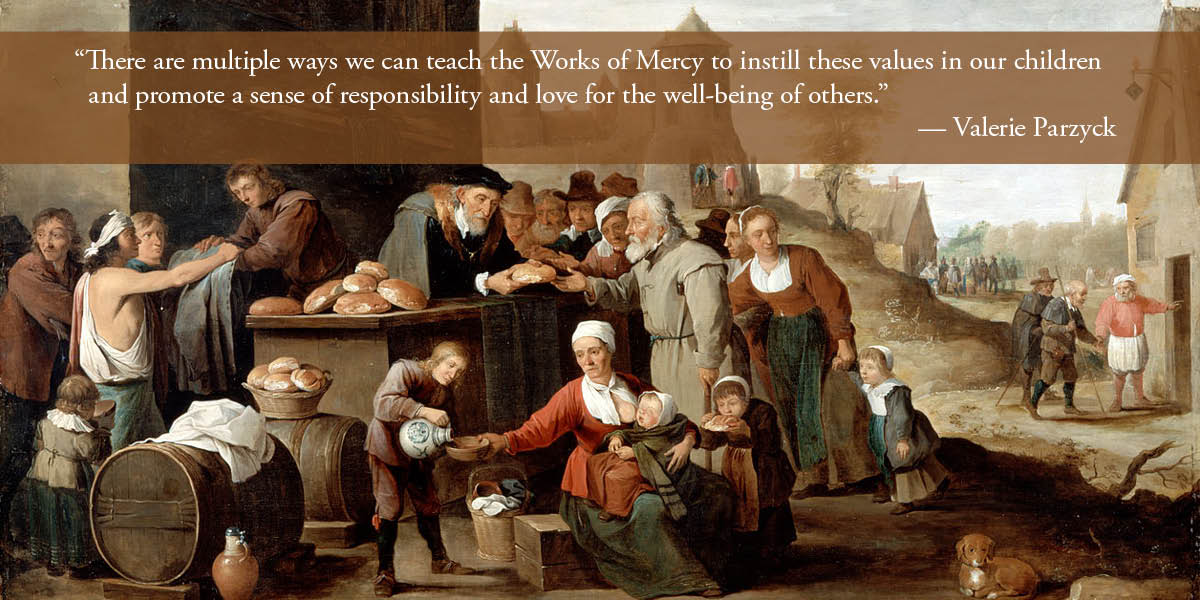
Works of mercy begin at home
Now more than ever we must teach our children compassion, empathy, and the invaluable lesson of helping others.
We live in a world consumed by materialism and self-centeredness. The Works of Mercy are ways we can serve others as Christ would by using the Church’s guiding principles for showing love and kindness to others. The Corporal Works of Mercy consist of feeding the hungry, sheltering the homeless, clothing the naked, visiting the sick and imprisoned, and burying the dead. The Spiritual Works of Mercy focus on spiritual needs: admonishing sinners, teaching, praying for others, sharing our faith, comforting and forgiving others, and bearing wrongs with patience.
These actions are a perfect model of how to show Christ to others. They are especially important with the increase of distractions that can lead children and teens onto the wrong path. Our responsibility as parents is to make sure that our children become strong, valuable members of society.
There are multiple ways we can teach the Works of Mercy to instill these values in our children and promote a sense of responsibility and love for the well-being of others.
Lead by example
Children learn through observation; therefore, parents must lead by example. It can be an eye-opening experience to realize your children see and model what you say and do. The easiest way to engage in acts of mercy in the family is to make it a normal part of your life. This can be as simple as patiently helping a child with homework, demonstrating active listening when someone speaks, or taking time to help a friend in need. When parents are seen regularly doing these actions, they will inspire their children to follow suit.
Volunteer as a family
When was the last time your family worked together toward a common goal? Volunteering as a family unit helps strengthen the bond with one another while also encouraging communication. There is great satisfaction and joy for a family to work together on a common goal and see how the fruits of their labor benefit others.
Encourage acts of kindness
Teaching children to be kind is an essential life lesson. Encourage your children to perform small acts of kindness both at home and at school. Help them to identify their kindness by recognizing it when you see it. For example, if you see your child help another child tie his shoe, say to her, “That was very kind of you to help Michael tie his shoe. It can be hard to learn a new skill!” By doing this, you are acknowledging that her simple action can make a difference.
Make donations
Set aside a portion of your family’s budget for charitable donations. Let your children be involved in the decision-making process by allowing them to choose which organizations or causes to support. Take the time to explain to them how their donation will directly impact another person.
Promote empathy
Teach your children to see the world from the perspective of others. Discuss stories or news events that highlight the struggles people face and encourage your children to think about how they would feel in those situations. This helps to grow empathy and a greater understanding of the needs of others. Try to talk about emotions openly to help children identify and label their feelings and those of others. Taking time for open conversation can also teach children to actively listen when others talk. This helps them to understand people’s needs.
Reflect and pray
Taking time for reflection and prayer can reinforce the values of the Works of Mercy. Consider beginning or ending your day with a family prayer, expressing gratitude for your blessings, and asking for guidance when you fail to carry out acts of mercy for others. Follow through when someone asks you to pray for an intention.
Teaching the Works of Mercy at home is a beautiful way to instill compassion, kindness, and a strong sense of faith in your children.
—Valerie Parzyck is director of family faith formation and youth ministry at St. John Vianney Church in South Burlington.
—Originally published in the Winter 2023 issue of Vermont Catholic magazine.

